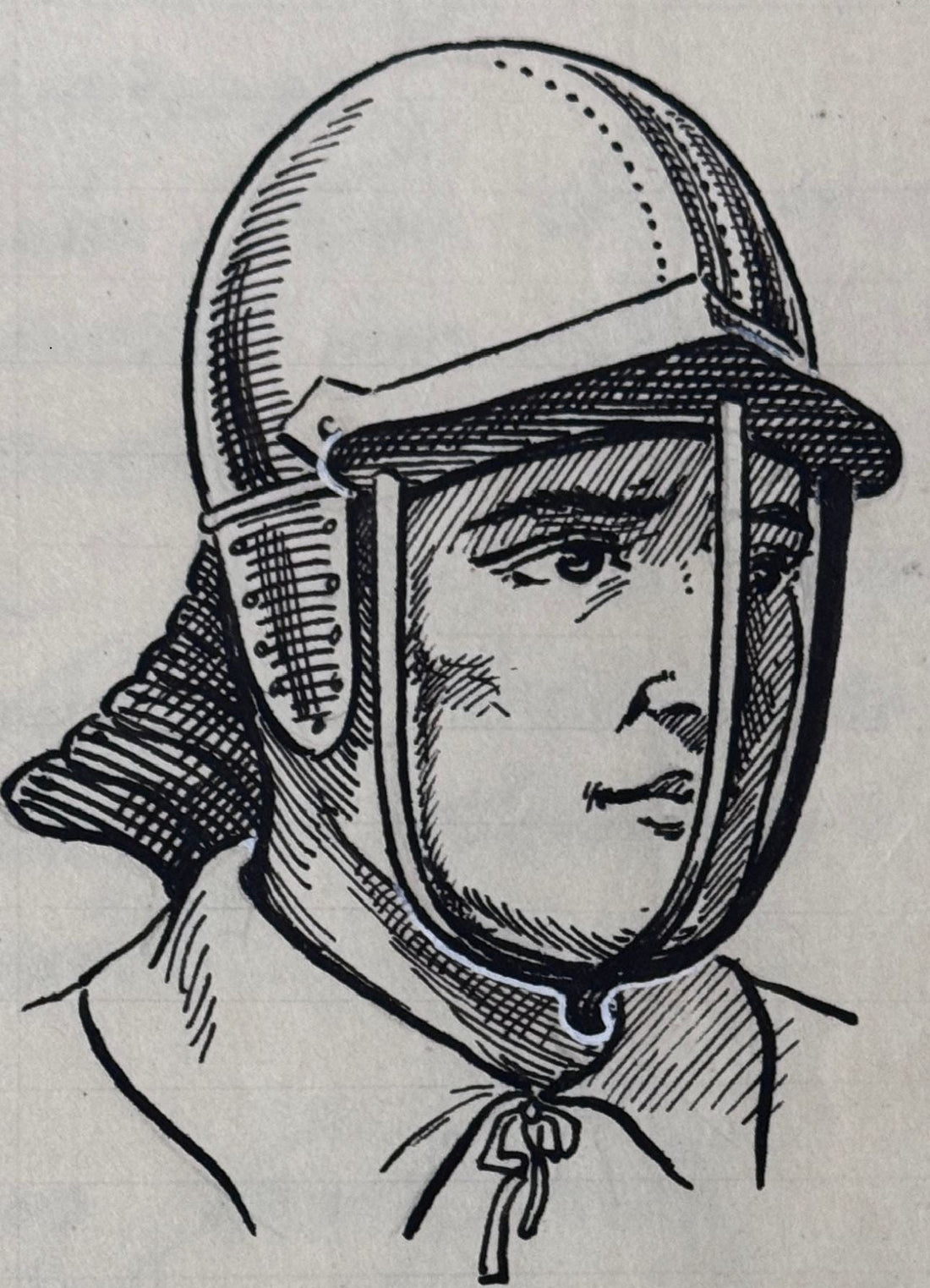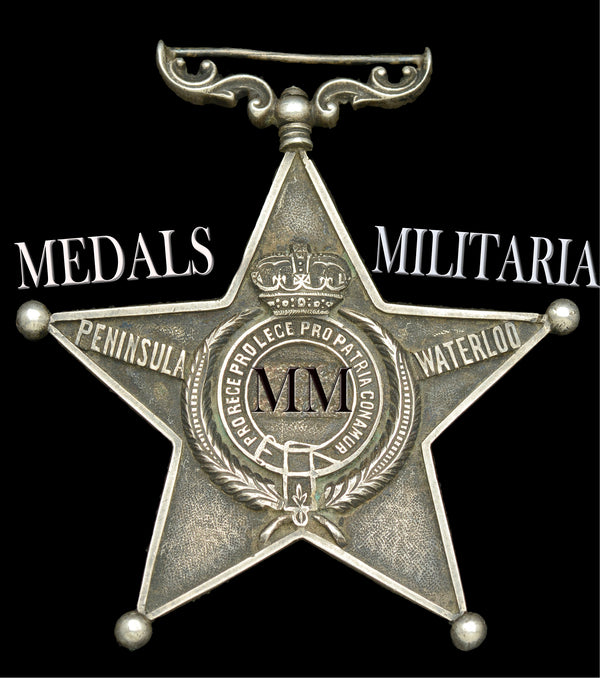
British Army Headdress 1660 - 1881. A Survey.
Condividere
British Army Headdress 1660 - 1881. A brief account.
At the commencement of the reign of King Charles II, regiments were composed of pikemen and musketeers only. The former wore iron “pot” headpieces. The latter round hats with broad brims. The only contemporary representation of the “pot” headpiece which I have is reproduced in plate I. (fig. 4).
In 1665 the musketeers of the Guards wore black hats. In 1670 captains wore helmets decorated with a plume of feathers, lieutenants wore helmets without feathers. Further on we find the helmets abolished and the feathers retained (Ffoulkes). Grenadier companies were added to our army in 1678. Evelyn says “grenadiers wore furred caps with coped crowns like Janizaries, and some had long hoods hanging down behind”. A cap of this type is shown in plate I (fig. 2), it will be noticed that this cap has the badge of the cypher & crown of Jas. II.
In Cannon’s Records of the 3rd Foot we read that “In 1678 a company of grenadiers was added to the Holland Regt. They wore fur caps with a high crown. The musketeers and pikemen of the Regt. wore round hats with broad brims, turned up on one side.”
In “The British Army, etc.” by Sir S. D. Scott, Bart. (1880) we read that “In 1678 the cost of a foot soldier’s clothing was settled at £2–3–0. Hats are not included in this price.” When iron pots were worn, they were provided by the Ordnance, but they were discontinued except for pikemen, and hats with feathers were substituted. About 1686 the musketeers of the army wore round beaver hats turned up on one side; the pikemen wore iron pots.
At the end of the reign of Chas. II the grenadiers of the Coldstream Gds. wore high conical caps lined and tasselled with green. At the coronation of James II (1685) the privates (musketeers) wore black hats turned up with gold galloon and tufted with red ribbons.
In Sandford’s account of the coronation of Jas. II we read that “the privates of the 1st Guards wore hats laced with silver and decorated with blue ribbons. The caps of the grenadiers were of red cloth lined with blue shalloon and laced with
silver; on the frontlets, very high the King’s Cypher and crown.*
In 1685 the 8th Foot wore large broad-brimmed hats, looped up with yellow ribbons. It is said that they received their nickname of “the leather hats” from this headdress. At this period the 13th Foot also wore broad-brimmed hats turned up at one side and decorated with yellow ribbons. In 1688 the 16th Foot wore hats turned up with a bunch of white ribbons at the side. Lt.-Col. C. Cooper King, F.G.S., in his “Story of the British Army,” 1897, states that “In 1695 the King directed that the ‘cap’ was to be worn by the grenadiers of each regt., the others wore the three-cornered hat.” In 1684 the Hon. Artillery Coy. wore helmets of solid silver on state occasions.
CAVALRY.
At the Restoration (1660) the Life Gds. wore broad-brimmed cavalier hats, with iron headpieces called “pots”? (two of these headpieces will be found in plate 2, figs. 3 & 4), worn inside like skull-caps, and white feathers drooping to the back (see plate 2, figs. 5 & 6). Towards the end of the century the feathers were abolished but were afterwards resumed, scarlet, white, & green for the three different Troops.
When raised in 1661 the 1st Royal Dragoons wore, like other cavalry corps, iron “pot” headpieces; whether this oft-repeated reference to “pot” headpieces means skull-caps worn inside the hats or as a helmet alone, I cannot say. I have no contemporary evidence to throw light upon it.
In J. R. Planché’s “History of Costume” we read that “At the review on Putney Heath, Oct. 1st, 1684, the King’s Troop (now 1st Life Gds.) had grenadier caps lined with blue, and a blue round mark on the outside (the grenade, see below).” At the coronation of Jas. II. (1685) the officers of the 1st Troop (now 1st Life Gds.) wore in their hats tours (feathers lying flat around the brim) of white feathers. The privates’ hats were black, turned up on one side, and edged with broad silver lace, and decorated with large blue knots of broad taffeta ribband.
In Sandford’s account of the coronation (1685) we find that the 1st Troop of Horse Grenadiers wore caps with the crowns raised high to a point, falling
back at the top in form of a capouch (capuchon?), which were turned up before and behind triangular, and faced with blue plush; and on the back of the crowns a round-ell or granado ball of the same, i.e., of blue plush, as alluded to on page 2. The officers appear to have worn black hats laced about with silver and adorned with knots of blue ribbands. (Planché.).
The King’s Dragoon Guards, the Queens Bays, and the 4th Dragoon Guards when first raised (1685) all wore hats with looped-up brims. (Neville. “British Military Prints”). The Carabiniers when first raised (1685) wore broad-brimmed hats with iron skull-caps sewn inside (plate 2); their hats were decorated with sea-green ribbands. Neville states that the carabiniers when raised, and the 7th Dragoon Guards when raised (in 1688) both wore hats with looped-up brims.
Planché says “In 1699 great alterations were made in the dress of the three English Troops of Life Guards. The feathers in the privates’ hats had been discontinued more than 20 years; but the whole were now ordered to resume them
the 1st Troop (now 1st Life Guards) to have scarlet feathers, the 2nd Troop (now 2nd Life Guards) to have white, and the 3rd Troop (disbanded in 1746) to have green.
The Royal North British Dragoons (now Scots Greys) when first raised in 1681, wore iron “pot” helmets. These “pot” helmets when worn alone must have been very similar to the type worn during the Civil War as per sketch below.



Part 2. to follow shortly.
